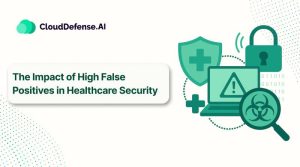Endpoint detection and response, or EDR, tools play an important role in network security by consistently monitoring endpoint devices for any indications of compromise and taking corrective actions.
The EDR technology is anticipated to experience substantial growth by 2028, offering enterprises a diverse range of options catering to various budgetary constraints and specific use case needs.
This article will explore this necessary security tool while also discussing the next-gen entry, XDR. Let’s dive into it, shall we?
What is Endpoint Detection and Response (EDR)?
EDR is an integrated security solution that uses real-time monitoring and endpoint data analysis to detect malicious behaviors and formulate responses to these instances.
What all of that means is that an EDR solution is installed on designated endpoint devices and monitors behaviors to detect and prevent harmful activities.
The term was coined by Anton Chuvakin at Gartner as a way to describe systems made to detect and investigate suspicious happenings involving endpoints of a network. However, before we dive into that…
What Exactly Is an Endpoint?
“Endpoint” is a networking term that describes any device that communicates data to, from, and throughout a network. Endpoints include, but are not limited to:
- Laptops
- Tablets
- Smartphones
- Desktop computers
- Servers
- Smartwatches
- And a whole host of IoT (internet of things) devices
Now that you understand what an endpoint is, it’ll be easier to understand the importance of EDR solutions.
What is the Importance of Endpoint Detection and Response solutions?
Cybersecurity is making major waves in international headlines, with regular stories of major breaches and data leaks. Notable among these, Federal Reserve chairman Jerome Powell recently stated that cyber threats were the top concern of the financial sector going forward:
“The world evolves. And the risks change as well,” Powell said during an interview aired Sunday on CBS’s “60 Minutes,” noting he is far more concerned about a cyber incident than he is about encountering a collapse akin to the global financial crisis of 2008. “And I would say that the risk that we keep our eyes on the most now is cyber risk.”
That being said, these increasing threats are not just limited to the financial sector. No one is safe from the threat of breaches and leaks so long as businesses have valuable proprietary data waiting to be exposed.
In most cases, people are the weakest link when it comes to cybersecurity and we are all interacting with network endpoints daily, which is why vulnerability management is very important.
Networks are complex webs of technology that combine all hosts of endpoints through the use of layers, switches, and firewalls.
Despite this complexity, it’s up to IT security teams to maintain control and awareness of all suspicious behavior on those networks.
EDR solutions shoulder some of that burden by providing an in-depth analysis of traffic going to and coming from endpoints on a network and even automating many of these security processes.
Automation will allow web application security analysts to focus on identifying and responding to these threats.
5 Key Components of EDR Solutions
Now that you know what an EDR solution is and why it is so critical to your security infrastructure, we’ve put together a list of the five most important elements of an EDR solution.
You can use this list to determine if your EDR platform (or prospective vendor) is up to the task of protecting your most valuable assets and network components.
Activity Detection
The base functionality of an EDR solution must include activity detection capabilities, specifically malicious activities.
Using contextual analysis of behaviors, EDR solutions must be able to parse through countless instances and interactions to determine which ones are harmless and which ones pose a threat to systems and/or data.
This functionality works hand-in-hand with the next to create a symbiotic relationship for endpoint security.
Activity Investigation
Once the EDR system detects potential malicious activity, it begins an investigation of this behavior to determine whether or not the end-user is acting against the security systems put in place by the administrator.
The most advanced endpoint detection and response solutions use algorithms to recognize patterns of malicious behavior to give EPPs (endpoint protection platforms) the ability to develop appropriate responses before an actor can carry out their goal.
An EDR will take note of specific behavior patterns regarding:
- Data being copied
- Data manipulation
- Process launching
- Data deletion
- Security systems killed
- And many others
These types of actions are major red flags in hacking operations and an EDR will take note of these patterns to help aid the next component of these solutions.
Automated Response
Some EDR solutions allow administrators to set up pre-programmed responses to specific behaviors so that the malicious process is stopped before any further damage is done.
These types of responses include all kinds of measures from logging out users, killing processes, and restricting user access to other systems and assets.
These pre-programmed responses give security analysts and administrators the time they need to perform further investigations into the behavior without relying on their potentially delayed response to the activity.
Activity Alerts
Once the EDR system has detected malicious behavior, analyzed it, and taken initial action against the user, it will then notify the security team of the instance and allow them to further address the issue.
While all of this sounds like a long and arduous process, an EDR solution moves through this cycle very quickly.
Post-Threat Analysis
Once the threat is dealt with, the security team has revoked access from the user, and they’ve removed whatever processes they attempted to put in place, an EDR will log the data of the attack for analysis purposes.
The best EDR platforms will later use the data to detect future attacks and learn to recognize other patterns over time.
Endpoint Detection and Response (EDR) vs. Anti-Virus vs. Endpoint Protection Platform (EPP)
While the concepts between these three types of software are similar, their purposes are distinctly different, and as such, their names should not be used interchangeably.
Endpoint Detection and Response (EDR)
As we discussed earlier, EDR deals with detecting malicious endpoint behaviors. These solutions are installed on endpoints and are meant to recognize behavior patterns, initiate pre-programmed responses, alert security teams, and catalog the malicious instances for future detection.
Anti-Virus
While anti-virus can fall under the capability umbrellas of some EDR systems, traditionally, an anti-virus program deals solely with detecting, preventing, and removing viruses from systems and endpoints.
Anti-virus software won’t detect certain behaviors related to phishing, manual privilege escalation, or manual data copying/deleting.
Endpoint Protection Platform (EPP)
We mentioned EPP earlier in this piece and it works hand-in-hand with EDR to prevent malicious activities from occurring. Modern EPPs use machine learning to develop sophisticated responses to the malicious behaviors detected by an EDR solution.
The best way to think about this is that an EDR is mostly built for recognition and detection, while an EPP is more about prevention and action against malicious processes.
To best protect your data and network infrastructures, it is recommended that you build a security structure that uses all three of these tools.
In the most recent times, the singular platform has gotten more and more traction, while EPP and EDR solutions work wonders in their field the single delivery platform works wonders for cybersecurity as well.
EDR Security Tips and Best Practices
When looking for an EDR solution, make sure you test out the platform and take note of the false positives and false negatives the solution throws up.
Accuracy is King
While false negatives indicate that certain security parameters need to be tightened, false positives are exceptionally dangerous due to the implication that the system will lead to users finding ways to opt-out.
Users only care about a fluid user experience and will do whatever it takes to get that positive experience, even finding ways to deactivate your security controls. Just look at corporate VPNs and how many company breaches occur because a user deactivated their VPN on a public network.
Your EDR can’t hinder the work of your users just because it sees every action as malicious activity. Choose a system with near-zero false positives and always work on tuning your system to prevent as many as possible.
Don’t Just Rely on Your EDR Without Human Input
Just as humans are imperfect, so are the machines and software we create. Your EDR solution won’t pick up every single threat to your organization and with the accelerating pace of cyberattacks, it’s up to you to add that human element you’ll need to keep everything in line.
Invest in your security team as well as your EDR by training them on the ins and outs of the system, and they’ll work on improving the detection capabilities of it all.
Use EDR to Enhance, not Replace your Existing Security Infrastructure
In the last section, we ran through the differences between EDR, EPP, and anti-virus and that was to drive home the point that EDR is not a replacement solution for the other two. Don’t look to EDR to be your one-stop shop for endpoint-based security.
You’ll still need the action-based capabilities of an EPP to root out and stop the detected activities and there are plenty of EDR vendors that incorporate anti-virus into their platforms (or work adjacently with your existing anti-virus).
Cybersecurity is a multi-layered effort run by many different tools, and EDR is just one component of that effort.
What is Endpoint EDR vs XDR?
Extended Detection and Response, or XDR, together with EDR, has emerged as the successor to traditional threat response methods. A lot of people get confused between these two terms and often have trouble understanding the differences.
Here are a few points to understand how they are similar before we dive into the differences.
Preventative Approach: Moving away from the usual focus on persistent threats, both EDR and XDR prevent incidents by carefully collecting environmental data, analyzing it, and using threat intelligence to identify potential threats before they occur.
Rapid Threat Response: EDR and XDR both support automated detection and response to cyber threats, enabling organizations to quickly prevent or remedy attacks, and reducing the costs and damages involved.
Threat Hunting Support: EDR and XDR are effective in ensuring the overall security of systems as they help analysts easily hunt for threats by providing clear visibility and simple access to data. This gives analysts the power to address potential vulnerabilities before they become a problem.
Now, let’s take a look at some of the differences:
Focus: EDR focuses on protecting individual devices closely, giving a detailed view. On the other hand, XDR takes a broader approach, securing everything from devices to cloud and email services.
Solution Integration: EDR requires manual integration with different solutions, specializing in protecting individual devices. In contrast, XDR provides a comprehensive solution that combines visibility and threat management in one, simplifying an organization’s security setup.
Level Up with XDR
A decade ago, EDR emerged as a pivotal cyber defense tool, focusing on monitoring and responding to activities on individual endpoints within the attack chain. Building upon this, XDR extends the capability beyond endpoints, including the entire attack kill chain.
This extension grants comprehensive visibility at every stage of intrusion, particularly valuable in modern distributed IT environments marked by cloud adoption and widespread remote work. XDR represents a cybersecurity breakthrough for organizations leveraging EDR and beyond.
It redefines defense strategies by minimizing the impact of cyber threats, extending detection capabilities across the entire IT ecosystem, offering a unified platform for streamlined deployment and management, enhancing operational efficiency by alleviating training burdens on security teams, and providing real-time visibility into attacker movements, thereby elevating cybersecurity agility and responsiveness.
Conclusion
Endpoint detection and response tools play an essential role in ensuring enterprise security by protecting endpoint devices and users, a key threat vector in the tech industry. With the EDR market reaching billion-dollar status, organizations have a range of options across different price points and use cases.
When selecting an EDR tool, prioritize features such as device protection, email security, cloud-based control, sandboxing, and security awareness training. Incorporating AI and ML for analysis and automated remediation not only enhances cybersecurity but also reduces effort and errors.







